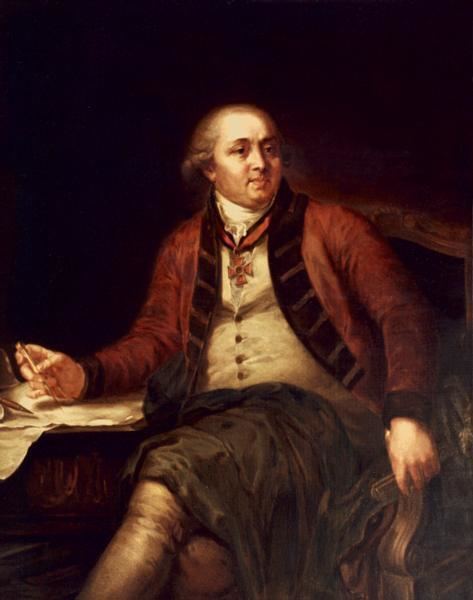Name Ivan Starov | Role Architect | |
 | ||
Died 1808, Saint Petersburg, Russia Structures Tauride Palace, St Vladimir's Cathedral, Ostankino Palace, Sophia Cathedral Similar People Giacomo Quarenghi, Vincenzo Brenna, Charles Cameron, Nikolai Sheremetev, Vladimir the Great | ||
Ivan Yegorovich Starov (Russian: Ива́н Его́рович Старо́в) (February 23, 1745, in Saint Petersburg – April 17, 1808, in Saint Petersburg) was a Russian architect from St. Petersburg who devised the master plans for Yaroslavl, Voronezh, Pskov, Dnipropetrovsk, Mykolaiv, and many other towns in Russia and Ukraine. His radial urban master plan for Yaroslavl (1778), cleverly highlighting dozens historic churches and towers, is recognized as one of the World Heritage Sites.

Starov was one of the first graduates of the Moscow University College (1755–1758) and of the Imperial Academy of Arts (1758–1762). He continued his education in Paris (1762–1767) and Rome (1767–1768), becoming apprenticed to Charles De Wailly and other fashionable architects of his day. Back in Russia, he delivered lectures in the Academy of Arts, which nominated him academician (1769) and professor (1785). Starov held the post of the principal architect of St. Petersburg between 1772 and 1774. After that, he worked extensively for Prince Potemkin, helping him to found the major cities of New Russia.
Works
Apart from urban planning, Starov was a leading representative of the early neoclassical architecture in Russia. His major projects chronicle the transition of national architecture from the late Rinaldiesque baroque of the 1760s to the magnificent Neoclassical palaces of the 1780s:
The Kherson Cathedral in Ukraine and the Homel Palace in Belarus are also frequently attributed to Starov.
